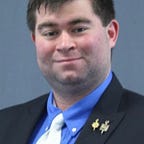Keeping the Fire Alive: Reflections on Japanese Community Education Practices
While writing “I’m All Fired Up Now”: The Role of Interest in Student Engagement and Success,” I cross-examined my experiences in American and Japanese schools to search for evidence that demonstrated the power of interest and student-centered learning. It was clear that both student interest in the content and teacher interest in the student were vital components for creating flourishing classroom communities. I recently had the opportunity to witness the power of classroom communities in a different way: through the structure of Japanese education practices. I believe that examining the Japanese system can further demonstrate the power of classroom communities and aid pursuits to better education practices commonly found in the United States.
In 2006, the Japanese Ministry of Education, Culture, Sports, Science and Technology (MEXT) updated its “Basic Act on Education.” This revised document promotes the idea of intellectual, moral, and physical education, in hopes of shaping a future populace that is committed to pursuing a better world. Article 12, “Social Education,” is especially important in this mission. Article 12 states:
The national and local governments shall encourage education that takes place within the community and society, in response to the demands of individuals and of the community and society as a whole…(MEXT, 2006).
I, too, believe that education should take place within the confines of the community. We should be preparing students to act as responsible citizens, to participate in community engagement, and to lead fulfilling lives.
My current school places students into classes based on their identified academic course, what would most likely be called a track or course of study in the United States. For example, students can be placed in the “Athletic Course,” the Advanced Course, and the International Course, among others. This groups students with similar aspirations into an aligned curriculum. Additionally, each class will remain a collective whole throughout their studies. If you were a student in your first year of high school, for instance, you could expect to have the same classmates from year to year (with little turnover beyond shifts from elementary to junior high to senior high school). This is done to help students grow with peers that have similar career plans. It also doubles as a way to create a strong classroom community.
I previously wrote that teachers should plan lessons with their students in mind. Any cursory glance at educational theory and scholarship will lead you to similar conclusions. Such planning allows classroom communities to flourish and enables teachers to more effectively engage students. Recently, I was planning a lesson on gender equality for my modern sociology class. Without thinking about it, I planned the lesson by explicitly drawing connections to the Sustainable Development Goals lesson that I assisted their class with the previous school year. I didn’t think for a moment about how I seamlessly tied the content together, until I remembered that I was following the training I received from my alma mater, James Madison University.
I realized that my subconscious planning choice was the result of the structure of the Japanese high school. It was something, I realized, that I would not be able to easily replicate in the United States, where student classes shift from year to year, and where teachers see few returnees from class to class. However, I believe that the United States, and any other nation seeking to improve its educational system can benefit from an examination of this process. Even without revamping existing systems, schools can implement small changes to mimic my experiences. I believe this can be done by following these steps:
(1) Teachers within departments should share constant data from year to year. They need to ensure that student profiles are complete and that the next teacher to work with any particular student is aware of that student’s experiences.
(2) Teachers should, whenever possible, reach out to all students — even those they do not directly teach. Get to know as many people as you can. Doing so, increases the chance that a strong relationship will grow.
(3) Give students the opportunity to work with students and teachers from other classes and grades by working on collaborative projects, completing cross-curricular and extracurricular activities.
The above steps need not be completed together, nor are they the only steps that can be taken. I encourage you to share your thoughts in the comment sections. Reach out to me with your ideas if you would like.
Let’s keep the fire burning so that all students can become engaged, reflective, and active citizens of our global, twenty-first century world.
Editor’s Note:
I grew up in India and the culture there is very similar to the education culture of Japan, as described by Andy here. In settings where we do not know our students personally as a class for longer than a year, an important lesson planning strategy that comes to mind is Universal Design for Learning, in which the teacher considers the diversity of the class before meeting the students, curating activities and content from the curriculum such that it is accessible to as many learners as possible. Choice in how the content is presented and taught to the student, and then expressed by the student allows the teacher to spend more time knowing the students. More on UDL, on the 27th!
